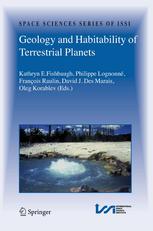

Most ebook files are in PDF format, so you can easily read them using various software such as Foxit Reader or directly on the Google Chrome browser.
Some ebook files are released by publishers in other formats such as .awz, .mobi, .epub, .fb2, etc. You may need to install specific software to read these formats on mobile/PC, such as Calibre.
Please read the tutorial at this link: https://ebookbell.com/faq
We offer FREE conversion to the popular formats you request; however, this may take some time. Therefore, right after payment, please email us, and we will try to provide the service as quickly as possible.
For some exceptional file formats or broken links (if any), please refrain from opening any disputes. Instead, email us first, and we will try to assist within a maximum of 6 hours.
EbookBell Team

4.1
30 reviewsGiven the fundamental importance of and universal interest in whether extraterrestrial life has developed or could eventually develop in our solar system and beyond, it is vital that an examination of planetary habitability goes beyond simple assumptions such as, "Where there is water, there is life." This book has resulted from a workshop at the International Space Science Institute (ISSI) in Bern, Switzerland (5-9 September 2005) that brought together planetary geologists, geophysicists, atmospheric scientists, and biologists to discuss the multi-faceted problem of how the habitability of a planet co-evolves with the geology of the surface and interior, the atmosphere, and the magnetosphere.
Each of the six chapters has been written by authors with a range of expertise so that each chapter is itself multi-disciplinary, comprehensive, and accessible to scientists in all disciplines. These chapters delve into what life needs to exist and ultimately to thrive, the early environments of the young terrestrial planets, the role of volatiles in habitability, currently habitable (but possibly not inhabited) geologic environments, the connection between a planet's inner workings and the habitability of its surface, and the effects on planetary atmospheres of solar evolution and the presence or absence of a magnetosphere.
This book serves as a useful reference for those who plan missions that will hunt for biomarkers (especially on Mars), for biologists and geoscientists who seek a broader view of the story, and for researchers and upper level students interested in an in-depth review of the geologic evolution of terrestrial planets, from their cores to their magnetospheres, and how that evolution shapes the habitability of the planetary surface.